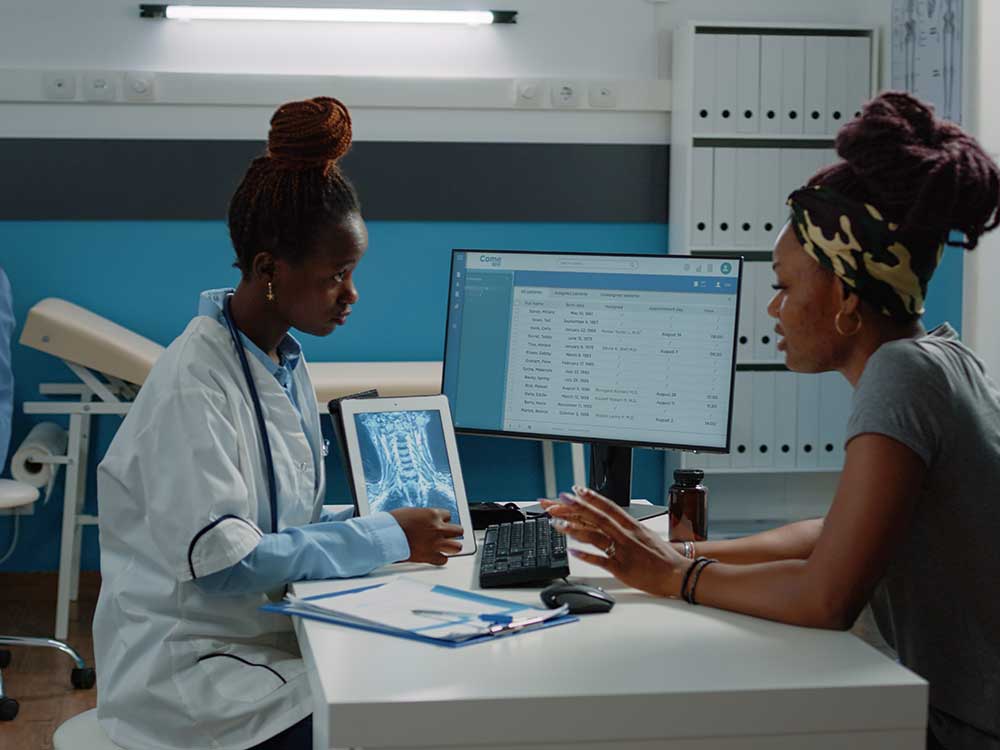A Total Guide to Medical Administration Certifications and Credentials
A Total Guide to Medical Administration Certifications and Credentials
Blog Article
Finest Practices in Medical Management for Improving Efficiency and Lowering Prices
In the ever-evolving landscape of medical care, the search of best practices in clinical management is vital for enhancing efficiency and suppressing expenditures. By incorporating advanced innovations such as digital wellness records and telemedicine, health care companies can enhance procedures and improve person care.
Leveraging Advanced Modern Technology
The integration of electronic solutions into health care systems has actually transformed the way facilities operate, streamlining procedures and enhancing individual care. By centralizing person info, EHRs eliminate the need for troublesome paperwork and facilitate seamless communication among medical care providers.
Telemedicine is another technical improvement that has actually transformed individual interaction. It offers convenience for both patients and healthcare experts by allowing remote appointments, which can lower the demand for in-person gos to and optimize appointment scheduling. Furthermore, telehealth platforms can expand medical care access to rural or underserved locations, linking gaps in care distribution.
Moreover, using Expert system (AI) and maker understanding is coming to be progressively widespread in predictive analytics, enabling early discovery of possible health and wellness problems and more educated decision-making. These innovations, when incorporated successfully, can enhance analysis precision and individualize person therapy plans, ultimately leading to boosted medical care results and functional performance.
Optimizing Resource Allowance
By strategically handling resources such as personnel, tools, and finances, healthcare facilities can substantially boost their functional performance, enhance individual outcomes, and decrease unnecessary expenditures. The first step in enhancing resource appropriation entails carrying out a detailed evaluation of existing properties and determining locations where resources might be underutilized or exhausted.
Prioritizing source appropriation based upon individual requirements and solution needs is crucial. This includes straightening resources with high-demand areas, such as emergency situation treatment or specialized therapies, to make sure timely and effective person care. Implementing versatile staffing versions can also maximize labor resources by readjusting workers allotment in response to rising and fall individual volumes. Additionally, accepting telemedicine and various other technical remedies can ease physical resource restraints by offering different opportunities for patient-provider communications.
Monetary sources must be carefully kept track of and alloted with tactical insight to sustain both temporary operational needs and long-term institutional goals. This consists of investing in training programs that improve personnel proficiencies and adopting energy-efficient methods that decrease functional prices (medical administration). Inevitably, an optimized source allowance approach promotes a sustainable healthcare atmosphere that is receptive, reliable, and financially prudent
Streamlining Operations Procedures
When health care facilities aim to enhance functional effectiveness, improving process procedures comes to be a critical emphasis. Reliable workflows reduce redundancy, eliminate unneeded actions, and boost control among health care professionals. This method not only speeds up service shipment yet also boosts the high quality of person treatment.

Next, innovation integration plays a considerable role in improving operations. Implementing electronic wellness records (EHRs) and computerized medical professional order entry (CPOE) systems lowers documentation, minimizes human mistake, and guarantees information is accessible to all relevant employees. In addition, leveraging telemedicine systems can streamline person examinations and follow-ups, decreasing the pressure on physical framework.

Inevitably, streamlined operations result in set you back decreases and boosted client contentment, fostering an extra sustainable healthcare atmosphere.
Enhancing Data Management
Building upon structured workflows, enhancing information administration becomes an essential component ahead of time health care management. Effective information monitoring systems are essential for maintaining precise individual records, improving decision-making, and making certain compliance with regulatory standards. By implementing durable information administration remedies, healthcare centers can boost the quality of client care while at the same time reducing functional prices.
One secret element of enhancing data management is the assimilation of sophisticated electronic wellness record (EHR) systems. These Visit Your URL systems help with the smooth exchange of person info throughout various divisions, decreasing duplication of examinations and lessening mistakes. A well-designed EHR system supports information analytics, making it possible for doctor to determine fads and make educated choices concerning client treatment.
Furthermore, guarding client information is vital. Taking on detailed cybersecurity procedures, including encryption and routine audits, ensures the stability and confidentiality of sensitive details. This not just shields people but additionally preserves the institution's online reputation.
Spending in team training is an additional important element. Informing health care professionals on information management techniques enhances their capability to effectively use innovation, causing boosted client outcomes. Finally, improving information monitoring through sophisticated technology and thorough training is crucial for accomplishing efficiency and expense reduction in medical administration.
Fostering Collaborative Communication
A vital element beforehand medical management is fostering collaborative interaction among health care experts. Effective interaction is vital for guaranteeing smooth person treatment, maximizing therapy outcomes, and reducing errors. By encouraging open dialogue and sychronisation across multidisciplinary groups, healthcare companies can boost their functional efficiency and decrease unnecessary expenses.
Central to this technique is the integration of interaction innovations such as digital health records (EHRs) and safe messaging platforms, which assist in the fast exchange of important individual information. These tools allow medical care companies to access and share data in actual time, making certain that all team members are informed and lined up in their decision-making processes. Regular team meetings and interdisciplinary rounds can better advertise a society of collaboration and responsibility.
Training programs concentrated on enhancing communication skills are also important. These programs can assist personnel establish helpful hints the ability to convey info plainly and pay attention proactively, thus reducing misconceptions and cultivating a helpful workplace. Additionally, taking on standard communication procedures, such as SBAR (Situation, History, Evaluation, Referral), can streamline the exchange of information, making sure that essential details are communicated succinctly and effectively. Eventually, cultivating collective communication results in enhanced medical care distribution and cost savings (medical administration).

Final Thought
Incorporating sophisticated modern technology, such as electronic health and wellness documents and telemedicine, along with optimized resource allotment and structured operations processes, is crucial for enhancing efficiency in clinical management. Effective information administration and fostering collective interaction among healthcare teams are essential for lessening redundancies and enhancing treatment quality. By prioritizing precautionary care and engaging in high quality renovation initiatives, health care companies can attain considerable cost savings and improved client end results, thus ensuring sustainable medical care delivery in a significantly intricate setting.
Report this page